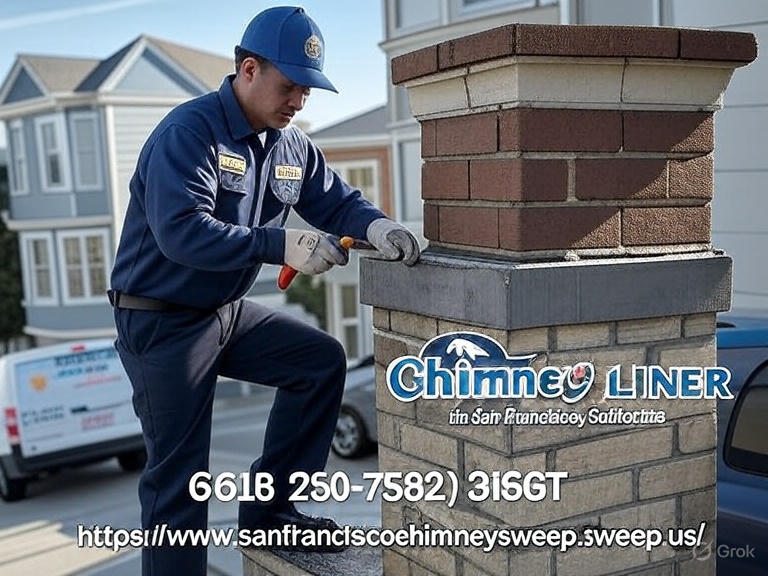If your chimney hasn’t been looked at in a while, you might be in for a surprise the next time a professional inspects it. One of the most common problems homeowners run into is a damaged or aging chimney liner. And when that happens, you’re faced with a big decision: do you repair the liner, or is it time to replace it altogether?This can feel like one of those “I don’t speak chimney” moments, but don’t worry we’re going to break it down in plain, everyday language. By the end of this article, you’ll know how to spot the signs of trouble, understand your options, and figure out the smartest move for your home and budget. This guide is especially helpful if you’re looking into a Chimney Liner in San Francisco.
Understanding What a Chimney Liner Does (and Why It Matters)
Before jumping into repair vs. replacement, it helps to know what a chimney liner actually does.
Think of it as your chimney’s internal safety suit. It lines the inside of the flue (the vertical tunnel that carries smoke out of your home) and plays three big roles:
- Protects your home from heat transfer that could cause fires.
- Keeps combustion gases like carbon monoxide from leaking into your house.
- Prevents damage to the bricks and mortar caused by smoke and acidic byproducts.
If that liner is cracked, corroded, or missing altogether, the system can’t do its job and that’s when safety and efficiency take a hit.
Signs Your Chimney Liner Might Be in Trouble
So how do you know if your liner needs help? Keep an eye out for these clues:
| Warning Sign | What It Could Mean |
| Crumbling tiles or flakes in firebox | Clay liner is deteriorating |
| Smoke backing into the room | Damaged or blocked liner |
| Rust around damper or firebox | Moisture getting in—liner might be breached |
| Strong odor from fireplace | Creosote buildup or ventilation issues |
| Fireplace not drafting properly | Liner could be cracked or improperly sized |
If any of these sound familiar, it’s definitely time to call in a chimney expert for a full inspection.
Option One: Repairing Your Chimney Liner
Repairing a liner is usually possible when the damage is minor and localized. That means no widespread cracking, crumbling, or corrosion just small areas that need sealing or reinforcement.
Common Repair Methods:
- Resurfacing: Using a special mortar mixture to coat the inside of a clay tile liner and fill in cracks.
- Patching: Sealing specific gaps or chips.
- Reinforcement: Installing a stainless steel liner inside the old one if it’s mostly intact but failing in spots.
Pros of Repairing:
- Less expensive than a full replacement
- Less invasive—sometimes no demolition needed
- Quicker turnaround
Cons:
- Doesn’t work for major damage
- Might just be a temporary fix
- Not always compatible with newer fireplace systems
Quote from the Field:
“Repairs are great if you catch the problem early. But waiting too long usually means full replacement is the safer route.”
— Eric G., Certified Chimney Technician in the Bay Area
Option Two: Replacing the Chimney Liner
Sometimes, repairs just aren’t enough. If your liner is beyond patching especially in older homes with clay tile liners that are falling apart replacement is often the only real solution.
Replacement Options:
- Stainless Steel Liner: Durable, safe, and compatible with most fuel types (wood, gas, oil).
- Cast-in-Place Liner: A special concrete-like mixture that’s poured into the chimney, forming a new liner.
- Aluminum Liner: Cheaper, but only suitable for certain gas appliances.
Pros of Replacement:
- Restores safety and performance completely
- Long-lasting (stainless steel liners often come with lifetime warranties)
- Increases resale value and passes inspections
Cons:
- More expensive upfront
- Installation can be more labor-intensive
- May require chimney resizing or prep work
How to Decide: Repair or Replace?
Here’s a simple side-by-side to help you compare:
| Factor | Repair | Replacement |
| Cost | Lower upfront cost | Higher upfront cost |
| Longevity | Shorter-term solution | Long-term durability |
| Level of damage | Minor, localized | Extensive or system-wide |
| Installation time | Quick fix (hours) | Can take a full day or more |
| Warranty | Limited, if any | Often includes lifetime warranties |
If you’re still unsure, the best move is to schedule a chimney inspection with a reputable local pro. They’ll use tools like video scanning to see exactly what’s going on inside and guide you toward the smartest solution.
Budgeting for the Job
Let’s talk dollars. While prices vary depending on your chimney size, fuel type, and local labor rates, here’s a rough estimate:
| Service Type | Estimated Cost (San Francisco Area) |
| Basic liner repair | $300 – $900 |
| Stainless steel replacement | $1,800 – $3,500+ |
| Cast-in-place liner | $2,000 – $5,000+ |
Remember, this is your home’s safety we’re talking about. Cheaping out can lead to dangerous leaks, fire hazards, or failing home inspections if you ever sell.
Final Thoughts: Your Chimney, Your Call
Whether you go with a repair or a full replacement depends on one thing: the actual condition of your liner. That’s why inspections are so important and why you should only work with licensed, experienced pros who won’t push you toward the most expensive option just to make a sale.When in doubt, think long-term. A new liner may cost more now but could save you thousands in future repairs, energy bills, or safety risks So if you’re noticing weird fireplace behavior, or it’s just been a while since your last chimney checkup, now’s the time. You’ll breathe easier knowing your system is safe, efficient, and ready for cozy nights ahead especially if you’re exploring options for Chimney Liner in San Francisco.
Read More:Chimney Sweep



